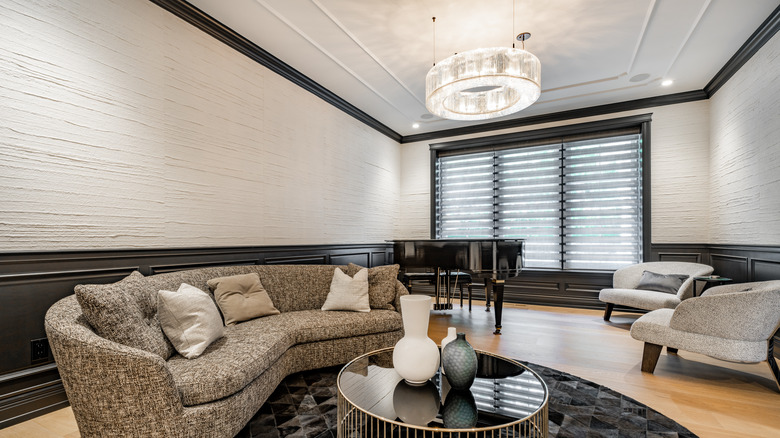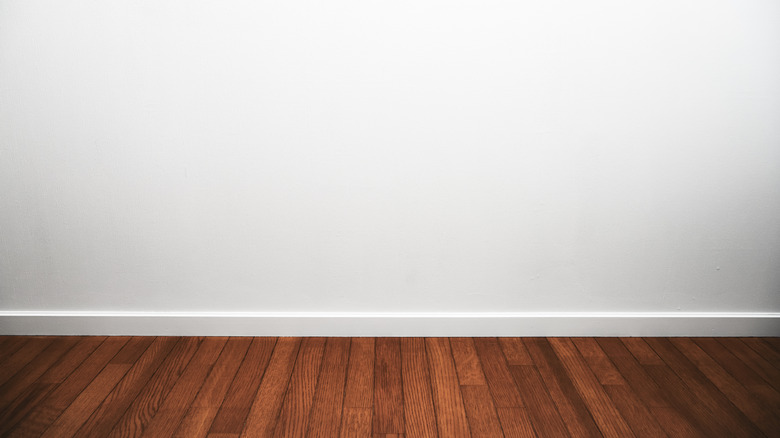How To Choose The Perfect Color For Your Trim
As exciting as it is to refresh your home with new colors, it's also overwhelming. With hundreds of paint samples in every possible hue and shade, it can be hard to have confidence in knowing which color will look best and reflect your Pinterest-inspired vision.
Even more difficult than choosing a paint color for your walls can be choosing one for your trim. It adds a whole new dimension of having to balance the two shades. As Five Star Painting notes, a good trim color should enhance the look of a room and be used as an accent to an existing wall color in a way that thoughtfully coordinates or contrasts with it. Whether you choose a coordinating color for your trim to tie your space together or a contrasting trim color to make other features of the room pop, picking the perfect shade will bring your space to life and make it as inviting as possible.
Using trim as a complementary color
Choosing a trim that is complementary to the existing wall color in a room in your home is a great way to add a sense of harmony, which is why many people choose a complementary color in a neutral tone of cream or natural wood.
Varying only slightly from the level of intensity of the wall color is a good rule of thumb if you want to use your trim color to complement the color of the room, which is why Five Star Painting suggests choosing a neutral trim color in a lighter shade than the wall if you have a bold wall color. A lighter, neutral trim shade will help showcase a bold wall color without overwhelming your space or being distracting.
Trim in neutral colors like off-white typically complement any wall color in the right shade. Going with a neutral also means that you probably won't need to repaint if you decide to change the wall color down the road.
Using trim in a contrasting color
While more traditional shades like white and cream are more common for trim because they match various colors, trim in bolder neutral shades such as black, and even bold pops of color have been increasing in popularity lately.
According to The Moulding Company, trim in a color that contrasts the color of your walls is a great way to make a dramatic statement in your living space or draw the eye to a focal point in a room. Black trim, particularly in a room with a lighter, neutral wall color such as white, adds just the right amount of starkness to provide a sense of depth and sleek, timeless elegance to a room.
If you aren't a fan of black but you still want to make a statement, The Moulding Company suggests painting your trim the same color as your walls but a few shades darker — keeping in mind that dark trim works best in rooms that have existing dark features and accents that you want to play up. This will ensure the space feels stylish and modern while still cohesive.
Choosing the right finish
Choosing the right paint finish for your trim is equally important as choosing the right color — the wrong finish can throw off the look of a room, even with the most expertly chosen palette.
While you can buy finishes ranging from flat to high-gloss, semi-gloss is the way to go when choosing a finish for your trim. It can add both beauty and function to a room; a semi-gloss finish is slightly reflective (but not too much), which will help play up the natural lighting in a room and can help make your trim stand out.
Clare also adds that trim paint in a semi-gloss finish will withstand wear and tear best since it tends to be the most durable and scuff-resistant of all the finishes. It's also easy to clean, which is important when considering how dirty your baseboards can get — especially in high-trafficked areas.



